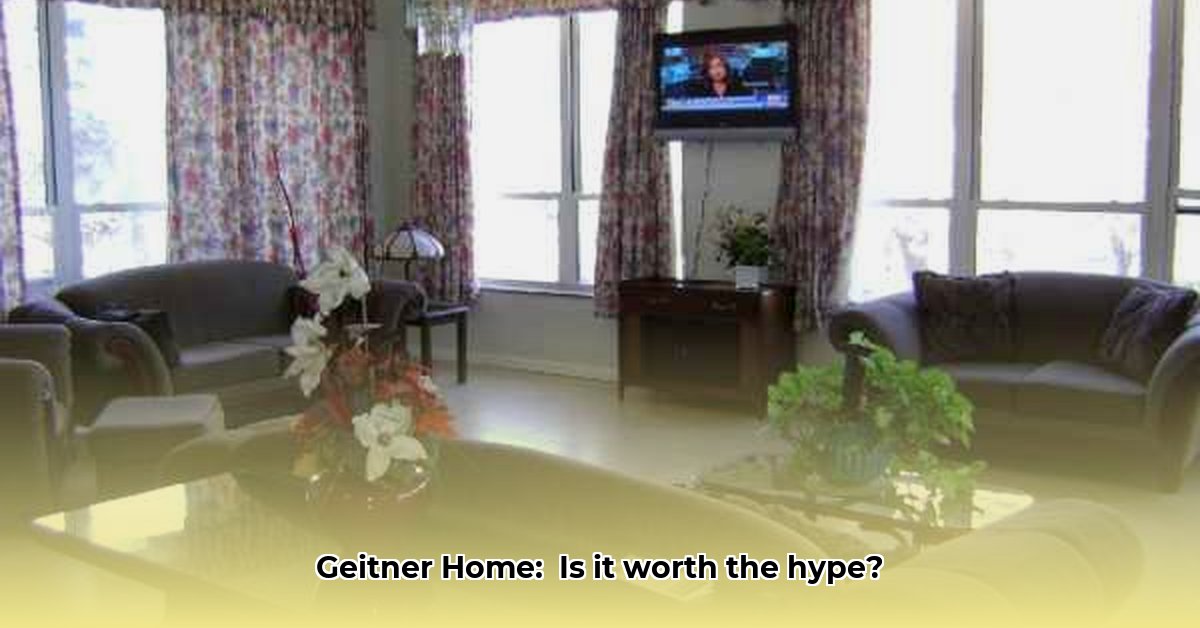
Geitner Home, a senior care facility, faces the common challenge of balancing high-quality care with the complexities of regulations and resource limitations. This review offers a balanced assessment, integrating both positive resident experiences and areas needing improvement. Our analysis aims to provide a comprehensive understanding, facilitating informed decisions for prospective residents and their families.
A Look at the Positives: Strengths of Geitner Home
Numerous resident and family testimonials highlight Geitner Home's supportive atmosphere. Staff are frequently lauded for their kindness and attentiveness, creating a sense of genuine care. This positive environment is reinforced by a proactive approach to resident well-being, exemplified by a remarkable 100% flu vaccination rate among residents, exceeding both Missouri state and national averages. Geitner Home’s successful prevention of any COVID-19-related resident deaths further underscores its effective infection control measures. Comfortable private rooms and peaceful outdoor spaces contribute to a pleasant living environment, fostering resident satisfaction and emotional well-being.
Areas Where Improvements Could Be Made: Addressing Challenges
While overwhelmingly positive qualitative feedback is encouraging, objective metrics reveal opportunities for improvement. Data indicates that Geitner Home's short-term rehabilitation outcomes lag behind national benchmarks. The rate of fall-related injuries among residents is significantly higher than the national average – approximately double, suggesting a need for revised fall-prevention strategies. Additionally, staffing levels, especially nursing staff, appear below recommended levels. While not automatically indicative of poor care, this could impact the timeliness of responses to resident needs and increase existing staff workload. Multiple state inspection violations, though categorized as low-risk, were also reported. These issues might appear insignificant individually, but their cumulative effect points to potential systemic challenges requiring attention.
Unpacking the Discrepancies: Possible Explanations
The variance between positive resident feedback and less-than-ideal quantitative data needs careful analysis. Several factors merit consideration. Resident population characteristics might influence rehabilitation outcomes, with residents having pre-existing conditions or requiring intensive care potentially skewing statistics. Resource constraints, including funding limitations or recruitment and retention difficulties for qualified staff, could also play a role. Organizational structure and internal policies related to staff training and safety protocols warrant review. Further investigation into these factors is required to determine the exact causes and develop well-targeted solutions. It's crucial to avoid assumptions; further research is needed to establish definitive causal relationships.
A Path Forward: Actionable Recommendations for Improvement
Addressing the identified issues requires a multi-pronged approach engaging all stakeholders. The following actions are prioritized:
For Geitner Home Administration:
(Immediate - 0-6 Months): Implement a comprehensive fall-prevention program encompassing staff training and environmental modifications. Review staffing levels and explore strategies to enhance recruitment and retention, including competitive compensation and benefits. Address all state inspection violations immediately. Enhance data collection and reporting to ensure transparent tracking of key performance indicators.
(Mid-Term - 6-18 Months): Invest in staff training programs focusing on short-term rehabilitation, best practices, and safety protocols. Explore collaborations with rehabilitation specialists to bolster existing expertise. Implement a robust quality improvement program with regular audits and performance reviews.
For Regulatory Bodies:
- (Ongoing): Enhance inspection frequency to ensure regulatory compliance and provide timely facility feedback. Offer resources to assist facilities in improving performance, particularly those facing challenges. Consider adjusting regulatory benchmarks to better reflect the needs of specific resident populations.
For Residents and Families:
- (Ongoing): Maintain open communication to keep families informed of improvement efforts. Create opportunities for feedback and resident engagement.
For Geitner Home Staff:
- (Ongoing): Invest in ongoing staff training and professional development, especially in fall prevention, medication safety, and effective communication. Foster a supportive work environment promoting teamwork and addressing staff concerns promptly and fairly. Provide opportunities for career advancement.
Risk Assessment Matrix: Identifying Key Risks and Mitigation Strategies
| Area | Likelihood of Failure | Impact of Failure | Mitigation Strategies |
|---|---|---|---|
| Short-term rehab | Medium | Increased falls, extended recovery times, potential complications | Enhanced training, improved risk assessment, updated safety protocols, staff augmentation |
| Medication Management | Low | Medication errors, adverse reactions, potential harm | Improved record keeping, double-checking systems, enhanced staff training |
| Infection Control | Low | Outbreaks, increased morbidity & mortality | Strict adherence to protocols, regular monitoring and testing, prompt reporting |
| Staff Recruitment/Retention | High | Understaffing, compromised care quality, increased workload | Competitive compensation & benefits, improved work environment, staff appreciation programs |
| Data Collection/Reporting | Medium | Inaccurate assessments, delayed problem identification | Streamlined processes, improved data quality, regular audits and reviews |
Conclusion: Towards Continuous Improvement
Geitner Home showcases both strengths and areas requiring improvement. While the positive resident testimonials highlight a supportive environment, objective data reveals shortcomings in short-term rehabilitation and staffing. By collaboratively implementing these improvements, Geitner Home can enhance care quality. Transparency, proactive measures, and continuous monitoring are crucial for sustained progress. Striving to not only meet, but exceed, regulatory standards will create a safer, more respectful, and better-cared-for environment for all residents.